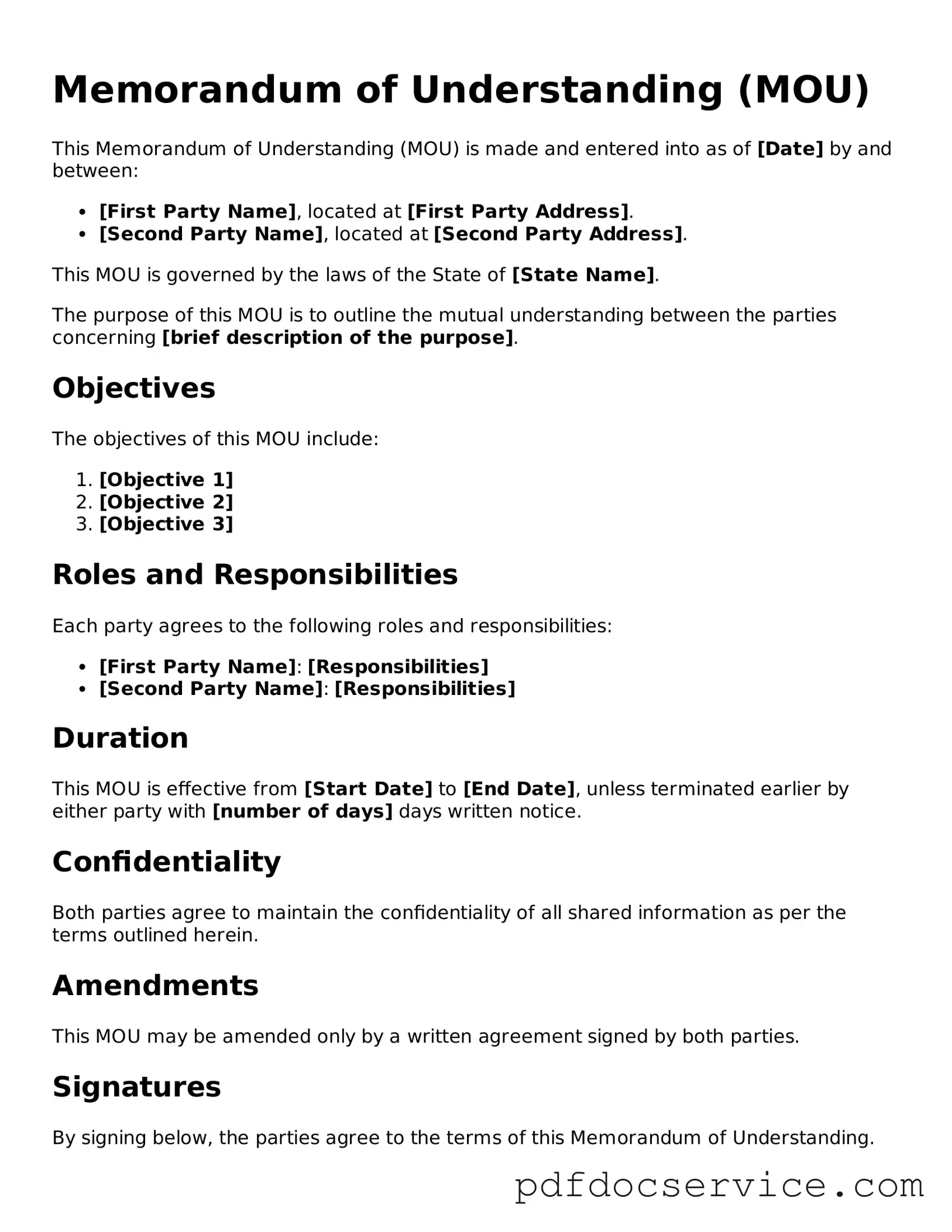What is a Memorandum of Understanding (MOU)?
A Memorandum of Understanding (MOU) is a formal agreement between two or more parties. It outlines the intentions and expectations of each party regarding a specific project or partnership. While an MOU is not legally binding, it serves as a useful tool to clarify roles, responsibilities, and goals.
When should I use an MOU?
You should consider using an MOU when:
-
You want to establish a partnership or collaboration.
-
You need to clarify the roles and responsibilities of each party.
-
You want to document mutual understanding before entering into a formal contract.
-
You are working on a project that requires coordination between multiple parties.
What are the key components of an MOU?
An effective MOU typically includes the following components:
-
Introduction: A brief overview of the parties involved.
-
Purpose: A statement explaining the intent of the MOU.
-
Scope of Work: Detailed descriptions of the roles and responsibilities of each party.
-
Duration: The time frame for which the MOU will be in effect.
-
Confidentiality: Any agreements regarding the sharing of sensitive information.
-
Signatures: Spaces for all parties to sign and date the document.
Is an MOU legally binding?
An MOU is generally not considered legally binding. However, it can create a moral obligation for the parties involved. It is important to clearly state in the document whether any part of the MOU is intended to be legally binding.
How do I draft an MOU?
To draft an MOU, follow these steps:
-
Identify the parties involved.
-
Clearly define the purpose of the MOU.
-
Outline the roles and responsibilities of each party.
-
Include any terms related to confidentiality or dispute resolution.
-
Specify the duration of the agreement.
-
Review the document for clarity and accuracy.
-
Have all parties sign and date the MOU.
Can an MOU be modified after it is signed?
Yes, an MOU can be modified after it is signed. All parties must agree to the changes, and it is advisable to document any modifications in writing. This ensures clarity and maintains a record of the updated agreement.
What happens if one party does not fulfill their obligations?
If one party fails to fulfill their obligations under an MOU, the other party may seek to address the issue through communication. Since an MOU is not legally binding, the recourse may be limited. However, it can still serve as a basis for discussion or negotiation to resolve any disputes.
Can an MOU be used in place of a contract?
An MOU can serve as a preliminary agreement or framework before a formal contract is established. However, it should not be used as a substitute for a legally binding contract if the parties intend to create enforceable obligations. A contract provides more legal protections and remedies than an MOU.
How long does an MOU last?
The duration of an MOU can vary based on the agreement between the parties. It is essential to specify the time frame within the document. If no duration is mentioned, the MOU may remain in effect until the parties agree to terminate it or until the purpose of the MOU has been fulfilled.
Where can I find a template for an MOU?
Templates for MOUs can be found online through various legal websites and resources. It is crucial to choose a template that suits your specific needs and to customize it to reflect the unique details of your agreement. Always ensure that the final document is reviewed for accuracy and completeness.
